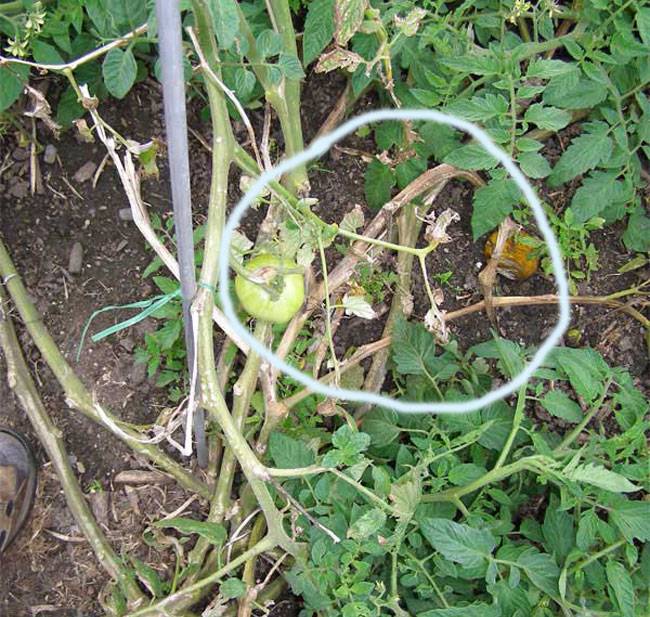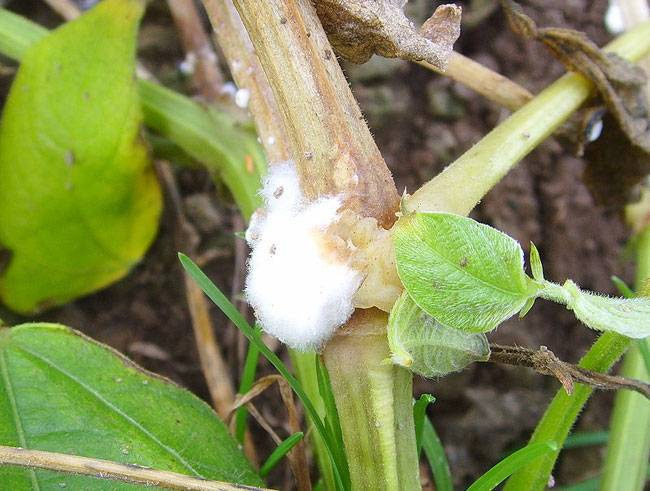Tomato
White Mold

Sclerotinia sclerotiorum
Fungal Disease

Sclerotinia sclerotiorum
Fungal Disease

Sclerotinia sclerotiorum
Fungal Disease

Sclerotinia sclerotiorum
Fungal Disease

Sclerotinia sclerotiorum
Fungal Disease
White mold is a serious, and often lethal, fungal disease that affects over 374 types of plants in many plant families.
Plants affected by white mold can wilt rapidly as a result of stem-girdling cankers at or near the soil line. Brown spots can appear on flower petals and buds. Cottony masses of fungal threads (hyphae) may appear on stems or on nearby soil. Hard, irregularly-shaped masses called sclerotia develop within or on the surface of infected plants. The sclerotia are white at first and then turn dark brown or black when mature. It can usually be found on tissues with high water content and in close proximity to the soil. One of the first symptoms noticed is an visible area of white, fluffy mycelial growth. Usually this is preceded by pale to dark brown lesions on the stem at the soil line. The mycelium then cover this necrotic area. Once the xylem is affected, other symptoms occur higher up in the plant.
On fruits, the initial dark lesions occur on the tissue that comes in contact with the soil. Next, white fungal mycelium covers the fruit and it decays. This can occur when the fruit is in the field or when in storage.
White mold is caused by several species of the fungus Sclerotinia that overwinter as sclerotia in dead plant material or in infested soil. Sclerotia can survive for several years. During periods of cool, wet weather sclerotia germinate to form either hyphae or tiny, mushroom-like spore-producing structures called apothecia. Either spores or hyphae can infect plant tissue. Spores are dispersed primarily by wind, but also by rainsplash and insects. Infection often begins on dead or decaying plant parts like flowers and leaves, and then spreads to healthy tissue. In some plants, seeds can be contaminated by sclerotia or hyphae of the fungus.








